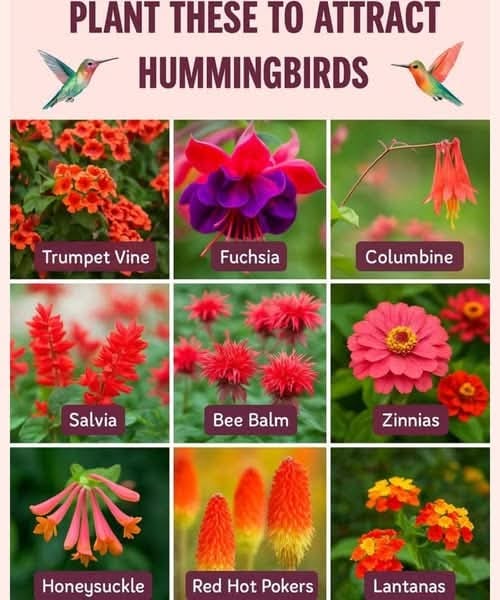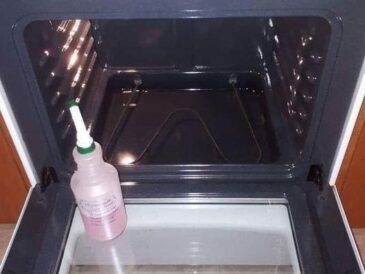Few sights in a garden compare to the mesmerizing flutter of a hummingbird in motion—those dazzling flashes of color, rapid wingbeats, and darting energy feel almost magical. These tiny birds are not only beautiful to watch but are also important pollinators that thrive in vibrant, nectar-rich environments. If you want to turn your garden, balcony, or yard into a hummingbird haven, it all begins with the right plants.
In this guide, we’ll explore the best flowers and vines to plant for attracting hummingbirds, why these specific plants work, and how to design a garden that supports hummingbird health and happiness from spring to fall.
🌿 Why Hummingbirds Are Drawn to Certain Plants
Hummingbirds are uniquely adapted to feed from flowers that produce copious amounts of nectar, especially those with tubular blossoms. Their long, specialized beaks and tongues can reach deep into blooms that other pollinators might avoid. Bright colors—particularly reds, oranges, and hot pinks—catch their eye, and they’re highly visual feeders.
To create a hummingbird-friendly garden, choose flowers that meet the following criteria:
- Bright colors (especially red, orange, pink, purple)
- Tubular or bell-shaped blooms
- High nectar content
- Continuous bloom cycles throughout the seasons
Let’s dive into the best plant picks for attracting hummingbirds:
🌺 1. Trumpet Vine (Campsis radicans)
Hardiness: USDA Zones 4–9
Bloom Time: Mid-summer to fall
Sun: Full sun to part shade
Height/Spread: Up to 30–40 feet
Why Hummingbirds Love It:
Trumpet Vine is one of the ultimate hummingbird magnets. Its bold, trumpet-shaped flowers are perfectly structured for hummingbird feeding, and the vivid orange to scarlet red hues are irresistible to these birds.
Growing Tips:
- Provide a very sturdy support structure like a pergola, trellis, or fence—this vine grows aggressively.
- Prune regularly to keep growth in check and prevent invasiveness.
- It tolerates poor soil but prefers well-drained, moderately fertile conditions.
Caution:
It can become invasive in some regions. Choose a native cultivar or consider planting in a contained area if you’re in a sensitive ecosystem.
🌸 2. Fuchsia (Fuchsia spp.)
Hardiness: Zones 9–11 (can be grown as annuals elsewhere)
Bloom Time: Spring through frost
Sun: Part shade
Height/Spread: 1–3 feet, depending on variety
Why Hummingbirds Love It:
The pendulous, two-toned flowers of fuchsia—often in vivid reds, purples, and pinks—are like neon signs for hummingbirds. Their bell-like shape and hanging growth pattern make for easy access while hovering.
Growing Tips:
- Perfect for hanging baskets, window boxes, or patio containers.
- Keep soil consistently moist but not soggy.
- Pinch back growth to encourage more flowering.
🌼 3. Columbine (Aquilegia spp.)
Hardiness: Zones 3–9
Bloom Time: Late spring to early summer
Sun: Full sun to part shade
Height/Spread: 1–3 feet
Why Hummingbirds Love It:
Columbine has delicate, spurred flowers in a rainbow of hues. The longer, nectar-rich spurs are ideal for hummingbirds with longer beaks.
Growing Tips:
- Tolerates a variety of soil types.
- Self-seeds readily and can naturalize in wildflower or cottage-style gardens.
- Deadhead to prolong bloom and prevent excessive spreading.
🔴 4. Salvia (Sage)
Hardiness: Zones 4–10 (depending on species)
Bloom Time: Late spring to fall
Sun: Full sun
Height/Spread: 1–5 feet
Why Hummingbirds Love It:
Red and purple salvias (especially Salvia greggii, Salvia coccinea, and Salvia splendens) are known for their long tubular blooms that produce nectar over a long season.
Growing Tips:
- Thrives in full sun and well-drained soil.
- Deer- and drought-resistant, making them easy-care options.
- Cut back after flowering to encourage reblooming.
💜 5. Bee Balm (Monarda spp.)
Hardiness: Zones 3–9
Bloom Time: Midsummer to fall
Sun: Full sun to part shade
Height/Spread: 2–4 feet
Why Hummingbirds Love It:
Click page 2 for more




